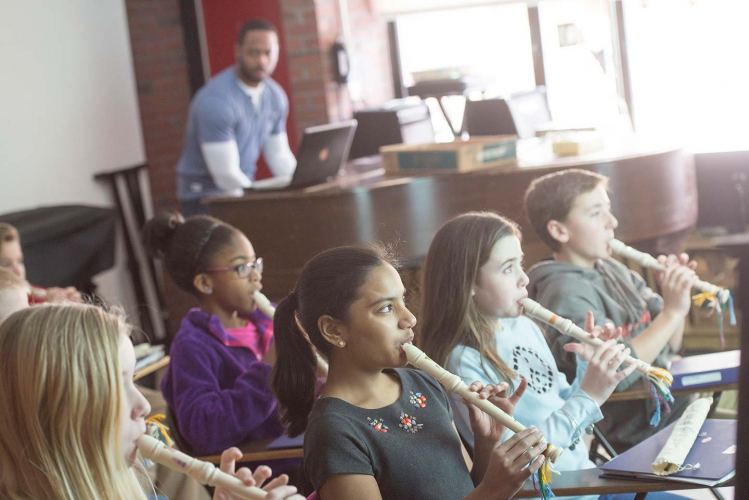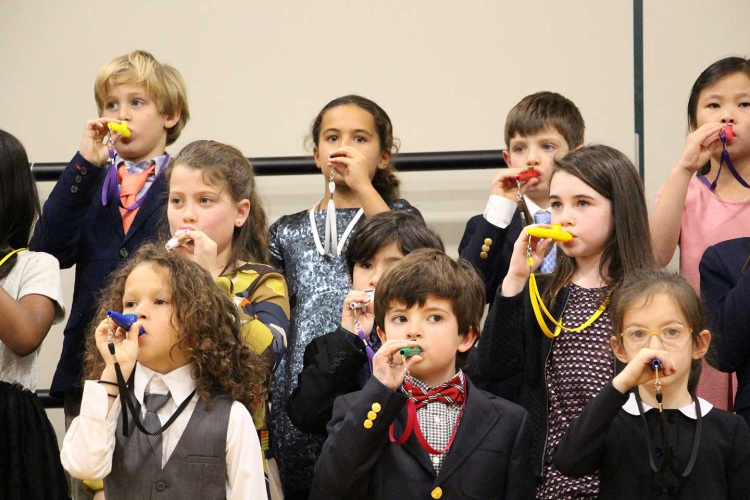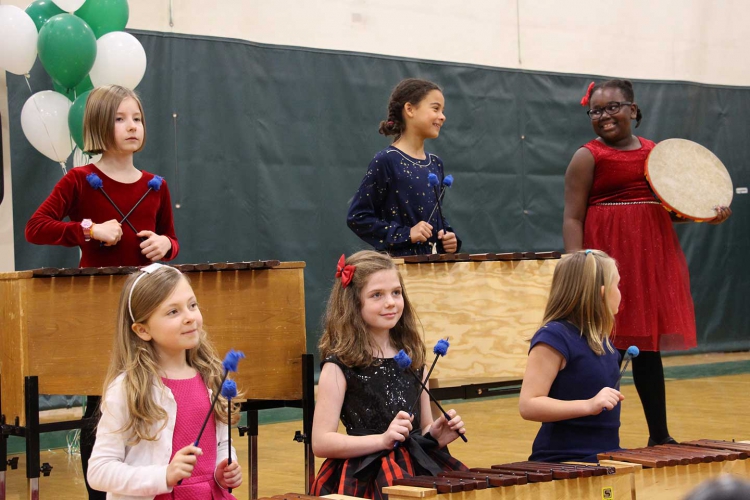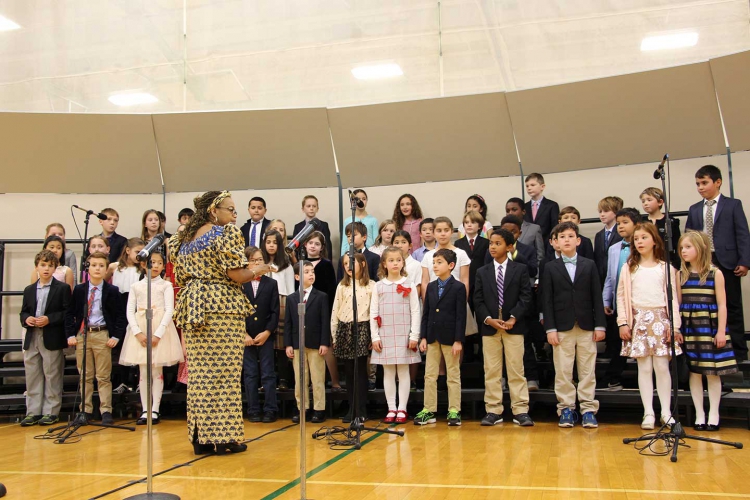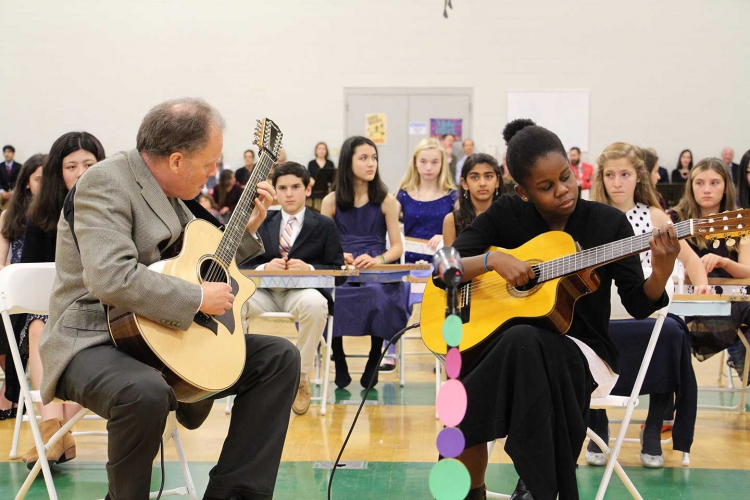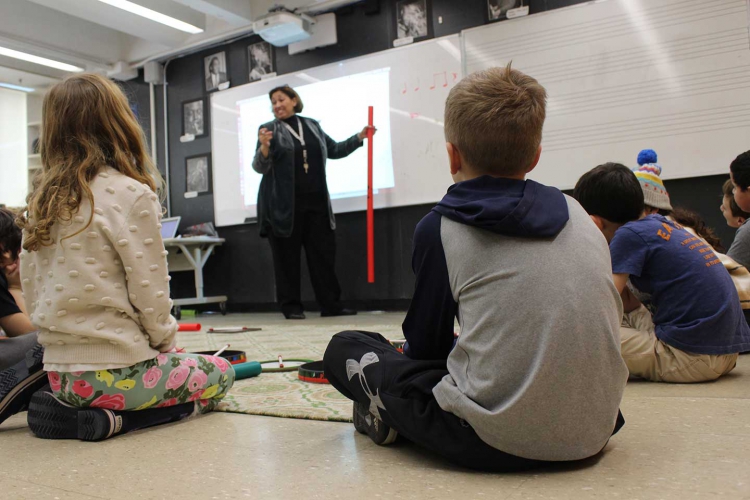Every day at Park, we strive to educate the whole child. A Park education is much more than just the rigorous academics. In addition to instilling strong community values, we believe unequivocally that physical education and arts education are an essential part of a balanced curriculum.
With the aforementioned premise, the Music Department began the process of assessing Park’s music education program in the fall of 2016. This assessment will help us to establish a music curriculum across a range of learning standards set by the National Association for Music Education (NAfME), evaluate student learning, measure program quality, and provide a level of educational accountability. Using NAfME’s Opportunity-to-Learn Standards as a guide, we are currently focused on Curriculum and Scheduling and Materials and Equipment, and will examine the other standards in the future. A comprehensive assessment like the one we are undertaking will enable us to steadily improve the quality of the program that we offer here at Park.
Materials and Equipment
Risers & Acoustic Shells – With limited space and 540 students, large performances like Yule Festival, Grandparents’ & Special Friends’ Day, and May Day have by necessity taken place in the West Gymnasium. Many parents and teachers had long expressed their frustration around the limited visibility and less-than-optimal acoustics of the gym. Last fall, immediately after my arrival at Park, we began taking action to improve the situation. With the help of a monetary gift from a Park alumnus and additional funding from the Parents’ Association, we were able to purchase a set of risers and acoustic shells to enhance the acoustics for our public presentations in time for the Grandparents’ and Special Friends’ Day celebration in November 2016.
Classroom Instruments – In order to improve students’ music education, we have also been able to grow our collection of classroom instruments, particularly for PreK through Grade VI. Students have been extremely enthusiastic about using the boom whackers, rhythm sticks, sound shapes, maracas, finger cymbals, jingle sticks, bells, egg shakers, frame drums during their music classes. Over the next few years, we will continue to update and add to the variety of musical instruments for students in all three divisions.
Chairs & Technology – This fall, each of the three music classrooms received a set of musician chairs, which promote good posture for singing and playing instruments thereby enabling better musicianship which leads to improved technique. With the support of the Technology Department, the music classrooms have been updated with Apple TVs and iPads to use with AirPlay and enhanced wireless audio. Students in Grades IV – VIII will also be introduced to Music First, a cloud-based music classroom tool which uses integrated software for music learning, sharing, assessment, and creation.
Curriculum and Scheduling
Recognizing that a thorough review of Park’s music curriculum required uninterrupted time and attention, the Music Department set aside time last summer to create a music curriculum for Grades Pre-K through 8. We focused on the four artistic processes (creating, performing, responding, and connecting), evaluated what we were currently teaching to identify areas in need of enhancement, and assessed what adjustments were needed to exemplify current teaching practices and up-to-date strategies in music education research.
It is important to note that our curriculum work aligns with NAfME’s Core General Music Standards. The Core Performance Standards address the learning that happens in music performance ensemble classes beginning in grade four – such as band, orchestra, and chorus – focused on preparation for public performances. Currently, the schedule does not allow for performance ensemble classes as part of Park’s music program with the exception of Grade VIII: Chorus, Guitar & Ukulele Ensemble and Jazz Band work to perfect their performance skills.
Informances – Acknowledging that Park’s current schedule could not accommodate meeting the Core Performance Standards, we have adopted a model of “informances” for students in Pre-K through Grade VII. An “informance” is an opportunity to inform the audience about the music curriculum which is being taught in that unit. An informance is a “showcase of learning,” an opportunity for authentic sharing and a celebration of learning which provides a glimpse into the process of music making. Like performances, informances are presented to an audience, but with the goal of informing in addition to entertaining. These showcases of intentional learning enable music educators and their students to remain focused on curriculum and the process of art-making.
In fact, this informance model has been in practice at Park for many years: Grade VII’s dulcimer unit. The study of the dulcimer’s historical and cultural roots, the building of the instrument, learning to play the instrument and then playing a piece at the annual Yule Festival celebration is a perfect example of applying the learning strand to a public presentation, making it an informance. Our progress with modifying Park’s music curriculum has already resulted in our first informance program on Grandparents’ and Special Friends’ Day for Pre-K – Grade III, and the introduction of “conversational solfege,” a pedagogical method to develop music literacy, in Grades IV and V. Going forward, as we look at the schedule, we are considering ways to include a performance ensemble strand in Grades IV – VIII with choral and instrumental ensembles.
Repertoire Selection – This summer’s work helped to focus our attention on the scope and sequence of the music curriculum: the grade-to-grade connections, music literacy, and the building blocks of a solid and comprehensive music understanding. Selecting repertoire is also connected to this process. The purpose of repertoire selection, in an academic setting which is focused on learning, is not always understood by audiences who are often predisposed to valuing entertainment over the learning process. Repertoire selection is about defining the curriculum and communicating what music education looks and sounds like with an eye toward curricular continuity and demonstration of learning. In setting the repertoire for Park’s annual productions, each music teacher considers the students’ learning process and selects a piece that will best demonstrate student achievement.
This process of assessment has been simultaneously challenging and rewarding. We are excited about these changes and look forward to the ongoing process of creating a strong music education program at The Park School.

